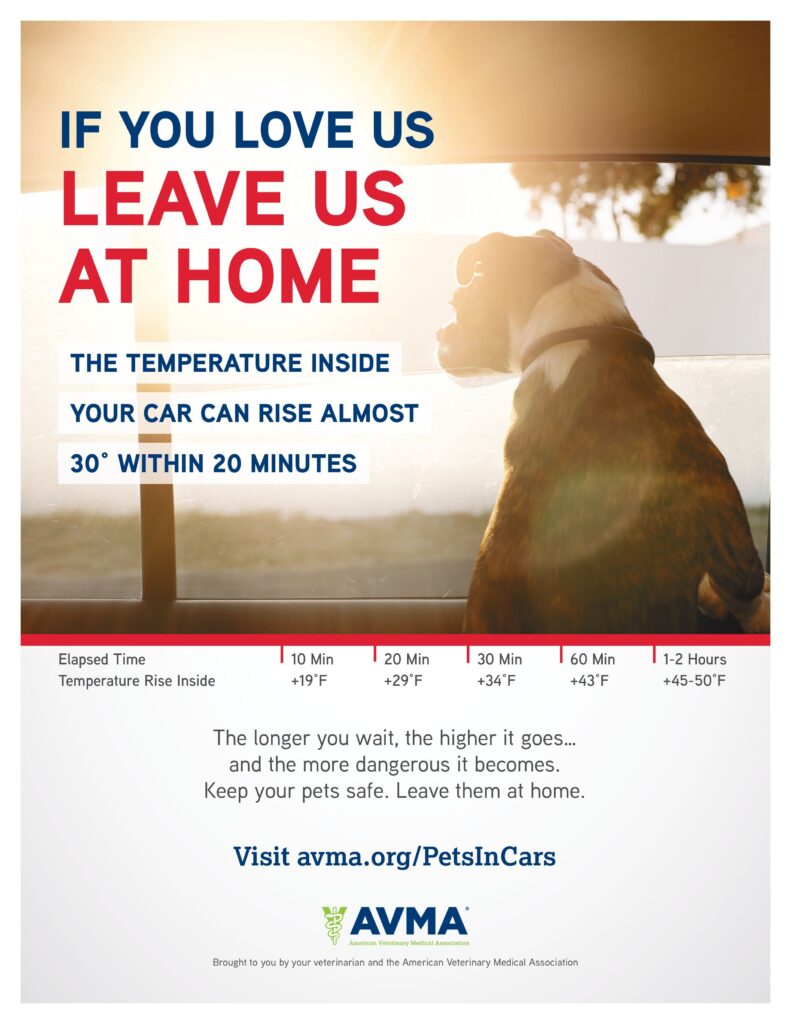Summer Is Back! Four Easy Tips to Protect Pets from the Heat

Summer in Florida means months of high heat, heavy humidity and long hours of blazing sun. Your pets’ bodies don’t regulate temperature the same way ours do. They are more vulnerable to overheating and heat-related health problems. As a pet owner, you can protect your furry friends all summer long with simple precautions that make a big difference.
How the Heat Affects Pets
Not all pets handle heat the same way. Young, elderly, overweight and brachycephalic breeds (those with smooshed-in faces, such as Bulldogs, Frenchies, Pugs, Shih Tzus, Pekingese, and Persian cats) are especially at risk. Pets with thick and dark coats are at higher risk as well.
Unlike humans, both dogs and cats have very poor cooling mechanisms. They have minimal sweat glands (located primarily on their paws) and do not cool themselves through the process of sweating. The primary way for them to cool down is through panting. Overall, this is a very poor and inefficient way to get rid of heat.
Preventative Measures to Keep Them Safe
Here as some essential tips for responsible pawrents:
- Check the daily forecast for your area and plan your pet’s walk in advance. You may need to walk your pet before, or shortly after, the sun rises.
- Second, avoid the hottest times of the day. It’s a common misconception that noon to 2:00 p.m. are the hottest times of the day. In reality, 2-6:00 p.m. tends to yield the hottest temperatures, as it takes time for the ground to accumulate heat from the sun.
- Third, ensure that your pet has plenty of access to shade and water throughout their walk and exercise.
- Finally, never leave your pet inside the car. On a 78-degree day, the temperature inside a parked car can easily and quickly reach 160 degrees. It is animal cruelty per Florida law to leave an animal inside the car, even with a cracked window!

Warning Signs and When to Act
Pawrents must realize that even on a “regular” day, certain surfaces may pose danger to their pets. For example, sidewalks and roads may accumulate heat to the point of burning the paws. Pawrents should avoid these areas during the hottest times of the day. Due to poor cooling capabilities, pets may not have the same walking/exercise stamina as they have on cooler days.
A heat stroke is the medical condition where a pet’s core temperature rises past the point of safety, resulting in a cascade of events that can set in quickly, including organ dysfunction, neurological abnormalities, and eventual death! Pawrents must observe and listen to their pet. Pets will physically tell us when it’s too much for them.
The clinical signs of a heat stroke are very easy to see. The first phase includes:
- Constant panting
- Excessive drinking
- A very red tongue and gums
- Lack of stamina
- Excessive drooling
During this phase, pawrents should immediately discontinue whatever form of exercise they are doing and seek ways to cool down their pet. If needed, go inside a building or restaurant that is air-conditioned. Stay there until the pet’s clinical signs return to normal.
The safest way to cool down a pet is by wetting them down with room-temperature water and placing a fan near them. Avoid covering pets with water-soaked towels or ice-cold water as those can actually result in heat trapping.
Pawrents should seek immediate veterinary attention if the following is noted: lack of coordination when walking, little bruising on the gums/ears/belly, seizures, or collapse.
Your pet can’t say “I’m too hot” but their body will show you the signs. Being alert and prepared can help prevent a serious emergency. At Wags Animal Hospital, we are here to support you with expert care and practical advice. If your pet shows any signs of heat stress, don’t wait—contact us right away. Let’s keep your furry friends safe and comfortable and all summer long.